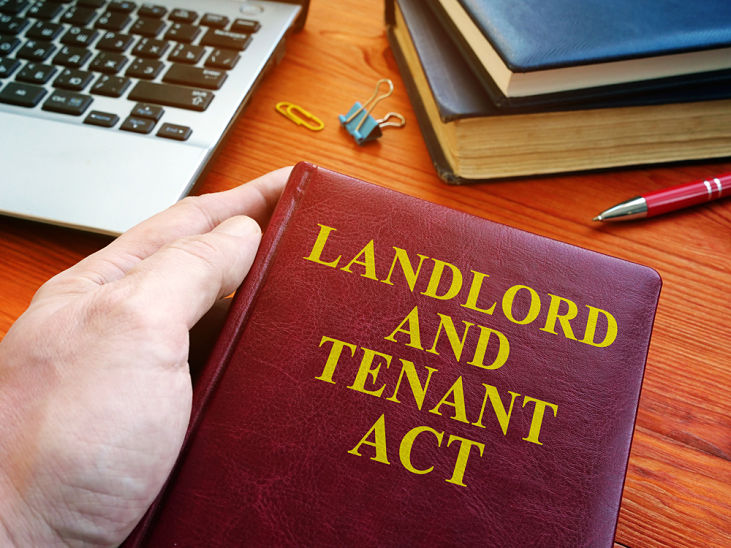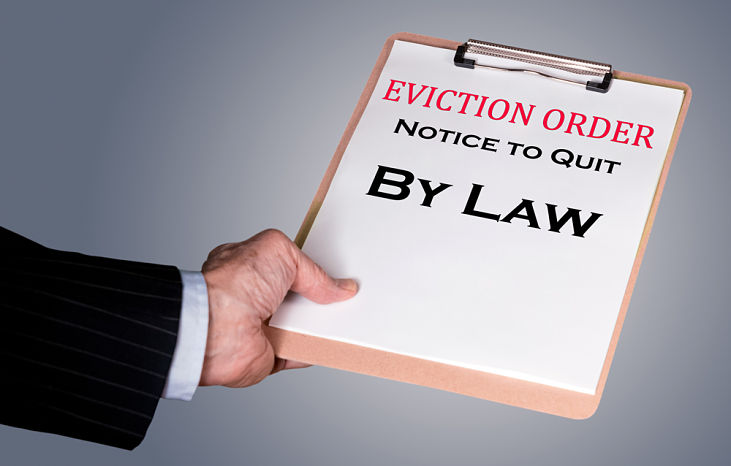When considering how to evict a tenant, there are many important steps that landlords must remember to follow. These are crucial if you want to quickly and legally remove a delinquent tenant.
This article explains the 7 steps that all rental property owners and managers must follow during the eviction process. It details clearly how to evict someone successfully and how to negotiate the rules on eviction without running into legal challenges and delays.
Consider the Laws that Apply to Your Landlord-Tenant Relationships
Before starting any eviction process it is essential to familiarize yourself with the regulations that govern your rental property in your state. State laws vary widely on evictions and while they all broadly follow the same procedures, details such as notice periods are unique in different states.
For example, in California, there are special rules in place that give tenants in state-subsidized housing up to 90 days’ notice before they can be asked to vacate. Also in Arkansas, an eviction is considered to be a criminal violation rather than just a civil case as in all other 49 states.
Knowing the local laws that will affect your eviction will help ensure that the process goes without any hitches. Not giving the right notice, giving the wrong reason for removing your tenant, or failing to follow your state’s procedures could lead to the eviction being overturned by a court.

Choose the Appropriate Notice for the Tenant’s Violation
It is absolutely critical that you provide the right amount of notice when you attempt to evict a tenant. The number of days’ notice that you give always depends on the lease or rental agreement violation that has been committed.
Many common violations could lead to a landlord evicting a tenant. An eviction is usually (but not always) permitted under the following circumstances:
- For non-payment of rent
- For lease violations (such as keeping unauthorized pets or causing a nuisance)
- To evict tenants without a lease
- For dangerous or criminal behavior on the property
- Ending a periodic tenancy
Remember that in a lot of cases an eviction notice will allow the tenant to ‘fix’ or ‘cure’ the issue that has led to forcible ejection being considered by the landlord. However, for more serious violations and ending periodic tenancies, the tenant will usually be expected to leave once the notice period is up.
The exact amount of days you should give will depend entirely on the violation and which state you are in. Each of the 50 states sets its own rules on the amount of notice that can be served for the tenant to vacate for each of the permitted evictable offenses.

Talk to the Tenant
It’s usually a good idea to talk to your tenant to explain the situation and give them a chance to leave on more-or-less their own terms. This may help smooth out the eviction process and help to avoid more severe and costly steps to be taken.
A question that is often asked by landlords during the eviction process is: can you evict a tenant without going to court? The answer is often yes, but it requires confronting your tenants and firmly and fairly explaining the situation before taking more formal action.
A little mutual respect can go a long way. Whilst suggesting the possibility of eviction will win you no friends, it might help the tenant to understand what is happening and why; possibly preventing a more contentious, litigious situation from arising.

If it appears that the situation cannot be resolved through dialogue alone, a formal eviction notice can be served to the tenant. Once again, specific rules must be followed to ensure that the document is legally valid and correctly allows you to file an eviction lawsuit if necessary.
Of course, an eviction notice must be compliant with the state laws that govern the location of your real estate. You will need to make sure that your eviction notice contains the following information to keep it legally effective:
- The name of the tenant(s) being threatened with eviction
- The address of the property
- The correct amount of notice for the violation the tenant has committed
- A legally valid reason for the eviction to take place (with details if necessary)
- The name and address of the landlord
Additionally, you will need to make sure that the notice is clearly served to the tenant in accordance with your state’s legal requirements and that it conforms with the information on the original lease or rental agreement. This will usually allow you to serve the Notice to Quit using the following methods:
- Self-service (i.e. delivering the notice in person)
- Via a certified process server
- By registered mail
Be aware that many states require proof of service. This means that the delivery person must complete an Affidavit of Service or a Certificate of Service once the eviction notice has been served.
Fortunately, this is often the end of the eviction process for many landlords. Assuming the eviction notice has been served to the tenant correctly and they choose to comply with it, you will not need to take any further action.

Start an Eviction Notice Template
File Your Eviction Lawsuit in Court
If the tenant refuses to leave the property even after notice has been served, you’ll need to file an eviction lawsuit in court and pay the appropriate fees. To do this, you should visit your local courthouse with a copy of your eviction notice and speak to the clerk.
The clerk will make sure that your eviction notice served the tenant with the correct amount of notice during this process. If they are satisfied with the evidence you provide, they schedule a date for your court case and inform the tenant via a summons of the litigation.

Get Ready for the Legal Hearings
Once your eviction lawsuit has been filed, you’ll need to prepare your case for the hearings. Before your day in court, you should first ensure you have the following documents available:
- The original lease agreement
- Payment records
- Evidence of bounced checks
- Police reports or any other evidence of a lease violation
- Records of your communications with the tenant (emails or phone calls for example)
- A copy of the eviction notice sent to the tenant
- Any proof of service documents (this may be legally required in certain states)
In most cases, tenants will defend their cause by trying to prove that the eviction was illegal. They may seek to do this by providing evidence that the eviction process wasn’t followed correctly by the landlord. This is why it is essential to make sure you have watertight proof that you’ve followed your state’s laws perfectly.

Evict the Tenant and Settle Any Outstanding Rent
If you win your court case against the tenant, the judge will give them a set number of days in which they must leave your property or face further legal action. If they then refuse to vacate, you can then get your local Sheriff’s department to escort them from the property and remove their belongings.
You may still be owed past-due rent at this point. If you find yourself in this situation, you can either settle the outstanding debt in small claims court. Alternatively, you can get a judge to issue a court order to the tenant’s employer to garnish their wages until the balance is repaid.
Another option is to hire a private debt collector to get the money for you. This will come at an extra cost but most debt collecting agencies report unpaid rent to the major credit bureaus. This will mean that future landlords will be able to know upfront if the tenant may skip out on rent.
Managing the eviction process is an unfortunate but necessary reality of being a landlord. However, by following the 7 steps above methodically, the whole procedure can be managed relatively quickly with as few problems as possible.

When you’re writing an eviction notice, you must make sure that your template conforms to your state’s laws or it won’t be legally effective. LawDistrict can help you prepare this essential legal document to fit your state’s requirements.
Start Your Personalized Eviction Notice









